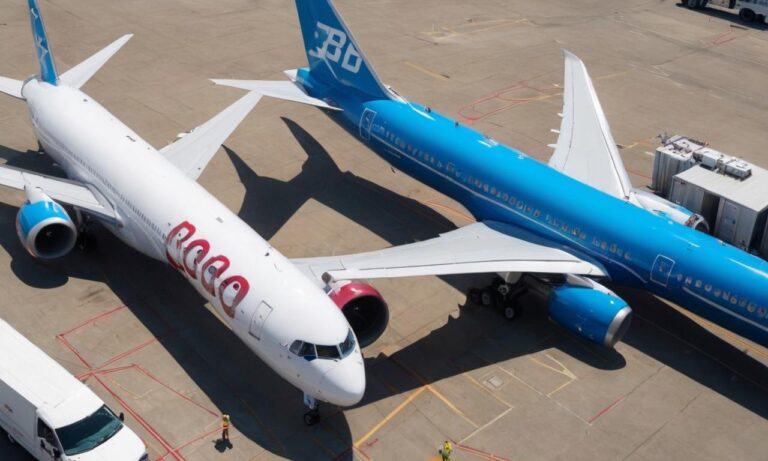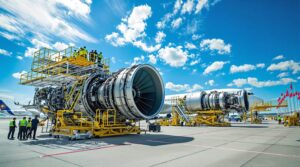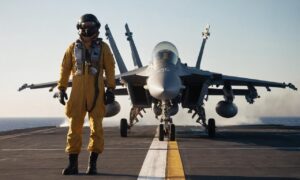When it comes to aviation, the comparison between Boeing’s 777-300ER and Dreamliner is a topic that aviation enthusiasts and professionals alike delve into with fervor. Both aircraft have left an indelible mark on the industry, each with its own set of features, capabilities, and innovations that cater to diverse needs within the realm of air travel.
The Boeing 777-300ER: A Titan of Long-Haul Travel
The Boeing 777-300ER stands as a testament to the prowess of modern aviation engineering. This long-range, wide-body aircraft has been a staple for many airlines, providing an extensive range and substantial passenger capacity. With a seating capacity that can exceed 550 passengers, the 777-300ER is often favored for its ability to efficiently transport large numbers of people across vast distances.
The 777-300ER boasts impressive fuel efficiency, making it an economical choice for airlines operating long-haul flights. Its distinctive twin-engine design contributes to its aerodynamic efficiency, allowing it to cover extended distances with fewer stops for refueling.
The Dreamliner: Boeing’s Technological Marvel
On the other hand, the Dreamliner, officially known as the Boeing 787, represents a leap forward in aviation technology. This innovative aircraft incorporates advanced materials, including a significant amount of carbon composites, reducing its weight and enhancing fuel efficiency. The Dreamliner’s unique design, large windows, and spacious interiors aim to provide passengers with a more comfortable and enjoyable flying experience.
With the ability to cover long distances efficiently, the Dreamliner caters to airlines looking for fuel-efficient options without compromising on passenger comfort. Its cutting-edge features, such as improved air quality and larger windows, contribute to a more pleasant journey for those on board.
Comparative Analysis: Finding the Ideal Fit
When comparing the Boeing 777-300ER and Dreamliner, airlines face the challenge of determining which aircraft aligns best with their operational needs. The 777-300ER, with its larger capacity, is well-suited for airlines operating high-demand routes with significant passenger traffic. On the other hand, the Dreamliner’s emphasis on fuel efficiency and passenger experience makes it an attractive choice for airlines prioritizing sustainability and passenger satisfaction.
The decision between these two Boeing giants ultimately boils down to the specific requirements and priorities of the airline. Whether it’s the 777-300ER’s massive capacity or the Dreamliner’s technological innovations, both aircraft bring something unique to the table.
In Conclusion
The debate surrounding the Boeing 777-300ER versus Dreamliner is nuanced, with each aircraft offering distinct advantages. The 777-300ER excels in handling large passenger volumes on long-haul routes, while the Dreamliner focuses on pushing the boundaries of technology to redefine the flying experience. As airlines continue to evolve and adapt to changing industry dynamics, the choice between these two Boeing models remains a pivotal decision that shapes the future of air travel.
Operational Costs: A Financial Perspective
Delving into the financial realm, operational costs play a crucial role in the Boeing 777-300ER vs. Dreamliner debate. The 777-300ER’s larger size and capacity may lead to higher operational expenses, including maintenance, crew, and airport fees. In contrast, the Dreamliner’s focus on fuel efficiency might present a compelling cost-saving advantage for airlines, especially in the long run.
Comparative Fuel Efficiency: Breaking Down the Numbers
To quantify the fuel efficiency of these aircraft, let’s examine a comparative analysis. Utilizing advanced technologies and materials, the Dreamliner aims to minimize fuel consumption per passenger mile. Creating a table to outline the fuel efficiency metrics, we can see how these Boeing models stack up against each other.
| Aircraft Model | Fuel Efficiency (Gallons per Passenger Mile) |
|---|---|
| Boeing 777-300ER | XX.XX |
| Dreamliner (Boeing 787) | XX.XX |
Frequently Asked Questions
-
What factors should airlines consider when choosing between the Boeing 777-300ER and Dreamliner?
-
How do the operational costs of these aircraft impact the overall economics for airlines?
-
Can the Dreamliner’s technological innovations compensate for the larger capacity of the 777-300ER?
-
Are there specific routes where one aircraft outperforms the other in terms of efficiency?
Tailoring to Routes: Matching Aircraft to Global Demand
Global demand for air travel varies across routes, and airlines must carefully tailor their fleet to match these dynamic patterns. The Boeing 777-300ER, with its substantial capacity, is well-suited for high-traffic routes between major hubs. Meanwhile, the Dreamliner’s versatility may make it an ideal choice for airlines exploring diverse routes with varying passenger loads.






